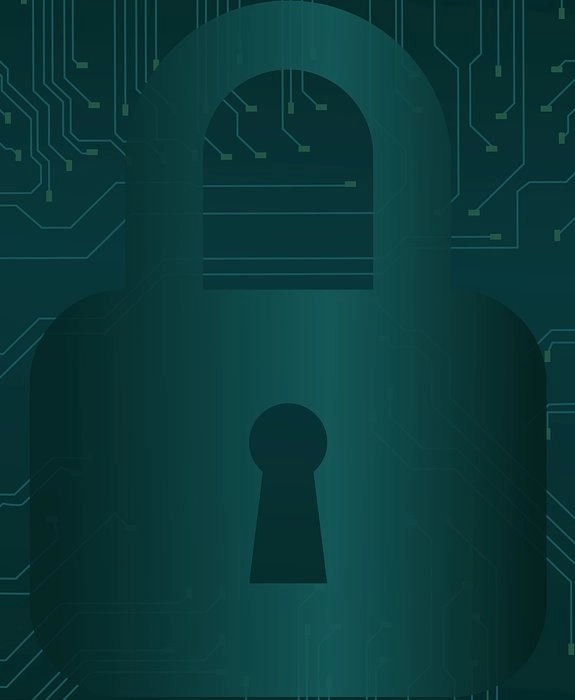Table of Contents
Introduction
The threats to the finance industry have increased since companies in this sector decided to go online globally. Digitization has been a boon at large, but this has also attracted negative attention as with any revolution. The availability of cheap hacking tools and widespread availability of internet connectivity have facilitated the mushrooming of cyber terrorists. Due to the stealthy nature of their attacks, it is imperative that enterprises in the financial domain practice utmost caution in terms of security.
61% of global data breaches in 2021 were due to the compromised credentials of users. In March 2018, one of the world’s largest databases containing details of 1.1 billion Indians was compromised due to a data leak that exposed sensitive information like the Aadhar Card details (equivalent of Social Security Number in the United States), biometric and banking information of citizens. The highly populated country connects all major digital documentation processes, including financial transactions, with an individual’s 12-digit unique Aadhar number. A data leak of this magnitude is enough to disarm a country and severely harm its infrastructure, besides causing mass hysteria.
Kinds of cyber threats in the financial industry
- Stealing credentials and identity theft: Identity theft has been a growing concern for the financial industry. Owing to the easy availability of sensitive information, it doesn’t take too much time to steal or buy an individual’s credentials and commit a crime. It is challenging for companies around the globe to distinguish between their customers and impersonators.
More dangerous to the health of a financial institution are synthetic identity thefts. Here, the fraudster uses a combination of legitimate credentials stolen from various individuals to create a synthetic identity. Such activities are more difficult to trace since the management doesn’t know who to contact when a data breach occurs.
- Data breach: A research conducted by IBM Security shows the average cost of a data breach was $4.24 million in 2021, the highest in 17 years. Data breaches are consequences of poor third-party integrations that do not take security seriously, the lack of good authentication tools, or compromised access to confidential information.
A data breach can be of many types, including Denial-of-Service or DoS attacks, malware, ransomware, phishing attacks, and weak passwords decoded using hacking tools or brute force.
- Cyberwarfare: Warfare is no longer limited to the battleground. Cyberwarfare is often a series of attacks on the digital infrastructure either sponsored by an enemy state or a terrorist organization. Since government agencies, financial institutions, and other crucial services have a mandatory online presence, such attacks tend to create a more significant impact, thereby crippling a nation. One of the most affected industries in such cases is finance. Attacking the financial sector is the best way to engage in cyberwarfare.
Why is cyber security important for your custom financial software solution?
- Good security measures go a long way in protecting your customers from credential theft. Impersonators are a growing concern for financial institutions and their clientele. Ensuring your company is safeguarded from such attacks is critical to your long-term success.
- Your enterprise’s intellectual property is an important asset that needs to be protected by all means available at your disposal. Theft or misuse of intellectual property could mean a hard blow to your company’s infrastructure. Integrating third party cyber security solutions with custom software solutions built for your organization could serve as the first line of defense in protecting your data.
- Cyber-attacks can happen to anyone. Blackhat hackers are adept at using technology for their malicious motives. While their techniques might be able to penetrate your system on a scarce occasion, taking good security measures will reduce the time you take to respond to cyber threats. This can significantly diminish the damage and help you recuperate fast.
- Robust cyber security solutions for your custom financial software helps you monitor the vicinity for any predictable threats. This can help you circumvent possible intrusions into your system and identify hostile sources.
- Malicious activities can often stem from within an enterprise. Integrating holistic security helps you control who has access to your database with ease while tracking their operations in case of suspicious activity.
Cyber security solutions for your software
Here are some recommended best practices to ensure your software is well protected from cyber attacks.
- Two-factor authentication: Two-factor authentication or 2FA has gained popularity due to its effectiveness against cyber-attacks. Passwords, irrespective of their uniqueness, can be penetrated with considerable ease. 2FA safeguards your client’s account by creating a second layer of authentication (secret questions, biometric information like a fingerprint, etc.). Hence, even if passwords are compromised, highly personal information like retina scans, fingerprints, or the maternal name of one’s mother is tough to breach.
- Robust password management tools: Password management tools are effective at suggesting, maintaining, and analyzing passwords. Integrating one such tool with your custom financial software can help you manage the sensitive information of your clientele, detect malicious activities, and eliminate password exhaustion.
- Regular backup of data: Regular, clean backups of your data can protect you against ransomware. Complying to a hacker’s demands affects not only your treasury but also your reputation. The best bet against that is to have a robust backup system with highly restricted access.
- Firewall implementation: Firewalls are essential security measures that analyze the data packets being exchanged within a network. The constant inspection of traffic in your network can help you prevent unauthorized access to your system, thereby minimizing security risks.
Conclusion
Cyber-attacks are a recurring issue that has disrupted companies across the globe, financial firms being the most popular targets of such intrusions. Equifax, the credit reporting company had a data breach in March 2017. Hackers found an easy route to their database, thereby stealing data for months before the breach was even identified. As dreadful as this sounds, there are plenty of case studies to show the inadequate efforts of enterprises in terms of cyber security.
You can avoid making similar mistakes by taking the necessary precautions for your custom financial software solutions. Security solutions like 2FA, password managers, firewalls, and robust, regular data backups can safeguard your customers and company. Adequate tracking mechanisms will help you bounce back stronger and faster in the rare event of a cyber-attack.
We at Asahi Technologies have the expertise to build secure software solutions for your business. We’d happy to provide a complimentary consultation so you are aware of the possibilities when it comes to building custom software solutions that are secure and keep you protected from external threats.
Stay ahead of the game with our helpful resources

4 digital solutions to address common application performance issues
High network latency, memory leaks, slow page loads, heavy CPU usage, and unresponsive servers are all typical performance issues we’ve experienced at some point when using or accessing digital applications. With how easy they occur in projects across verticals, you might be wondering whether the development teams behind these programs have done enough due diligence prior to the release. But human errors and oversight aren’t always the culprit. The reality is that while developers can strive to develop a fully functioning program with virtually no apparent faults upon delivery, no software is truly error-free. Even the most rigorously tested applications

6 useful tips for creating more robust application lifecycle management
As digital technology becomes the norm, software acquisition is now key to gaining a competitive edge in today’s market. Be it as a value offering tailored to consumers or a productivity tool to run complex processes, custom software undeniably helps companies drive growth and deliver value more efficiently. Just as necessary as having a proprietary application is prescribing a standard procedure to govern and maintain its utility. This is to ensure that your business can develop or adopt the right type of software—one that can fully cater to your business needs while keeping disruption to a minimum across critical milestones.

5 major roadblocks businesses must overcome when transitioning into a new software environment
As the business landscape becomes increasingly saturated, staying ahead of the curve often means embracing disruptive technologies to meet the fickle market demands. In most cases, this entails knowing when to pivot your current strategy to an entirely new solution. But recognizing the importance of digital shift is one thing; implementing the necessary IT upgrade is another. A global survey by Deloitte has found that although 87% of companies manage to identify the impact of digital trends on their industries, only 44% have adequately prepared for the coming disruptions. This vast disconnect between organizational expectations and conditions in the field

Is cloud computing the answer to better software development?
Cloud computing is perhaps not a term often heard in daily conversations, but it is one with a far-reaching impact on our technological needs. From expansive options of online data storage to numerous suites of web-based productivity tools like Google Workspace, nearly everyone has used a cloud-enabled technology. Over the last decade, this high degree of versatility also underpins the rapid cloud uptake among businesses. In fact, one survey has found that 94% of companies have already shifted their computing workloads on cloud platforms to varying extents. Unsurprisingly, the market size for cloud technology continues to grow exponentially. With a



